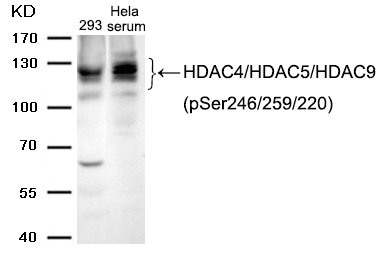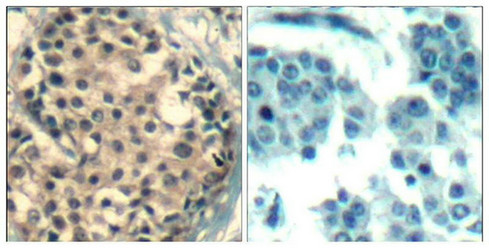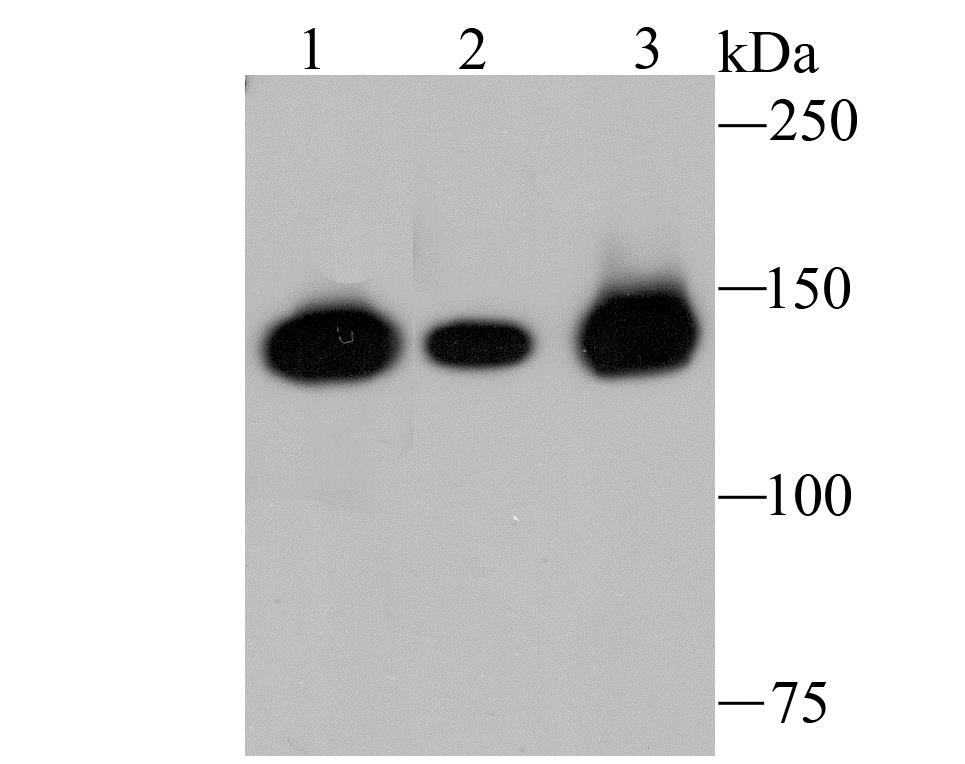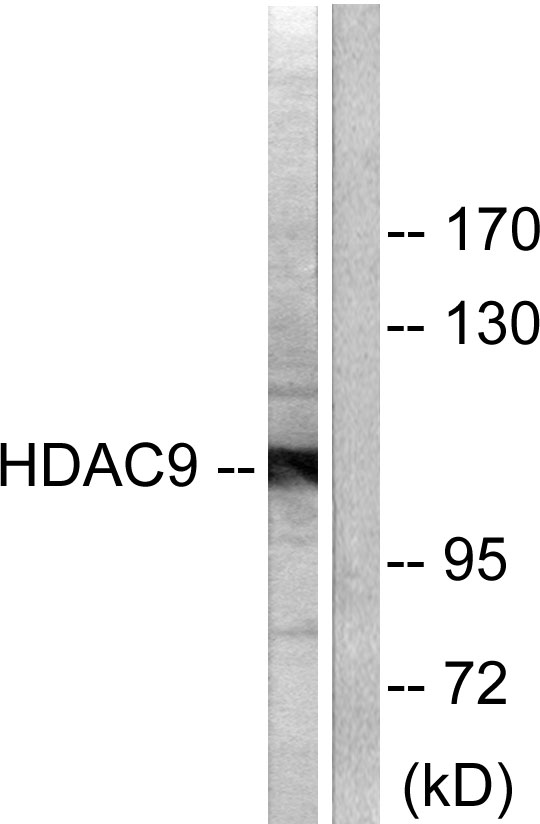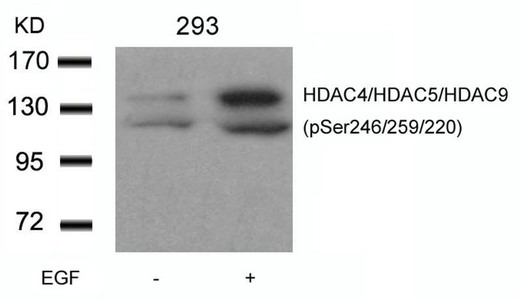
Western blot analysis of extracts from 293 cells untreated or treated with EGF using HDAC4/HDAC5/HDAC9(phospho-Ser246/259/220) Antibody.
Phospho-HDAC4/HDAC5/HDAC9 (Ser246/259/220) Antibody
CSB-PA442959
ApplicationsWestern Blot, ELISA, ImmunoHistoChemistry
Product group Antibodies
ReactivityHuman
TargetHDAC9
Overview
- SupplierCusabio
- Product NamePhospho-HDAC4/HDAC5/HDAC9 (Ser246/259/220) Antibody
- Delivery Days Customer20
- ApplicationsWestern Blot, ELISA, ImmunoHistoChemistry
- CertificationResearch Use Only
- ClonalityPolyclonal
- ConjugateUnconjugated
- Gene ID9734
- Target nameHDAC9
- Target descriptionhistone deacetylase 9
- Target synonymsARCND4, HD7, HD7b, HD9, HDAC, HDAC7, HDAC7B, HDAC9B, HDAC9FL, HDRP, MITR, histone deacetylase 9, MEF-2 interacting transcription repressor (MITR) protein, histone deacetylase 4/5-related protein, histone deacetylase 7B
- HostRabbit
- IsotypeIgG
- Protein IDP56524
- Protein NameHistone deacetylase 4
- Scientific DescriptionHistone Deacetylases (HDACs) are a group of enzymes closely related to sirtuins. They catalyze the removal of acetyl groups from lysine residues in histones and non-histone proteins, resulting in transcriptional repression. In general,they do not act autonomously but as components of large multiprotein complexes, such as pRb-E2F and mSin3A, that mediate important transcription regulatory pathways. There are three classes of HDACs; classes 1, 2 and 4, which are closely related Zn2+-dependent enzymes. HDACs are ubiquitously expressed and they can exist in the nucleus or cytosol. Their subcellular localization is effected by protein-protein interactions (for example HDAC-14.3.3 complexes are retained in the cytosol) and by the class to which they belong (class 1 HDACs are predominantly nuclear whilst class 2 HDACs shuttle between the nucleus and cytosol). HDACs have a role in cell growth arrest, differentiation and death and this has led to substantial interest in HDAC inhibitors as possible antineoplastic agents. Cress, W.D. and Seto, E. (2000) J Cell Physiol 184, 1-16. Vigushin, D.M. and Coombes, R.C. (2004) Curr. Cancer Drug Targets 4, 205-218. Marmorstein, R. (2001) Cell Mol Life Sci 58, 693-703. Thiagalingam, S. et al. (2003) Ann. N.Y. Acad. Sci. 983, 84-100.
- ReactivityHuman
- Storage Instruction-20°C or -80°C
- UNSPSC41116161

